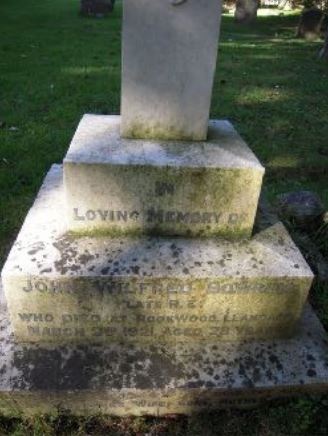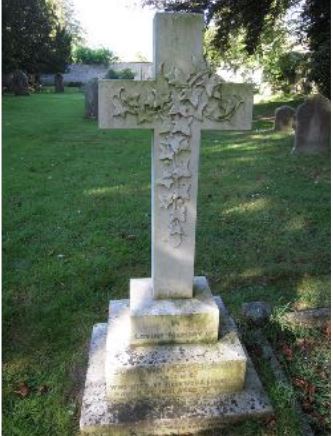Royal Engineers (Waterways & Railways)

John Wilfred Bowring was born on 10 March 1893 at South Cerney, one of six children born to William John Bowring (1869-1939), an agricultural labourer and his wife Rhoda Phyllis Selina (née Bateman: 1874-1954). Rather unusually, he was not baptised until 5 December 1910.
At the time of the 1901 Census the family home was at Canal Side, South Cerney. Ten years later, John had moved to the home of a surgeon and physician in Cirencester, where he was a servant.
On 2 April 1913, John married Bessie Street (1889-1966), at Lymington, Hampshire and the couple had one child, Stanley George Bowring, born in 1915.
Very little documentary evidence of Sapper Bowring’s Army career has survived. It is not known when John joined the Army but his Medal Rolls Index Card shows that he was originally given the number 270847, when serving with the Royal Engineers (RE). It also states a subsequent number,
WR/272293 and the actual Medal Roll shows him serving with the Railway Section. The prefix ‘WR’ is an indicator of service with the RE, Waterways and Railways. His medal entitlement indicates that he served abroad.
Where he served is not known but a recently released Pension Record Card (PRC) notes that he was receiving an allowance for disability resulting from malaria. It is likely, therefore that he saw service either on the Salonika front in northern Greece, or in a Middle East location such as Palestine or Mesopotamia. The PRC notes that he was discharged from the Army on 13 April 1920 and presumably was placed in the Reserve, until hostilities were formally terminated.
According to the burial records of All Hallows Church at South Cerney, he died at Rookwood Hospital, Llandaff, near Cardiff on 23 February 1921, age 28 and was buried there on the 8 March. The cause of death is not known. The PRC notes his widow, Bessie, to be living at Glamorgan Street, Canton, Cardiff and later in Appledore Road, Gabalfa, Cardiff. So possibly he was living in South Wales when he died.
Having been returned to South Cerney for burial in the churchyard of All Hallows, a white marble cross, mounted on a plinth, was erected over his grave.

Researched by Graham Adams 17 November 2020
